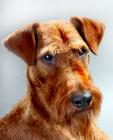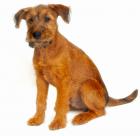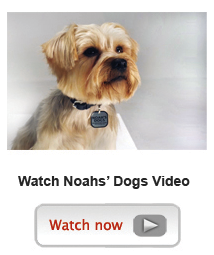Irish Terrier
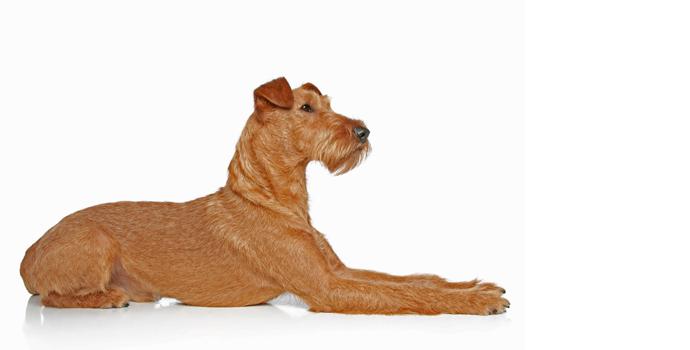
In my own words
What’s over there? Where we are going? Who’s that? I’m so curious; I just have to know what’s going on! I’m always looking for adventure and once I’ve found it, there’s no distracting me. Whether it’s chasing a mouse, digging up the back garden or running wild in a park, I’m ready for action!
Sometimes I bump into much bigger, scarier dogs on my adventures but they don’t scare me. I’ll show them who’s boss. I’m not afraid of anything or anyone! I’ll even protect you from trouble too; intruders will rue the day that they decided to come into your house.
Once I’ve burnt up all my energy and I’ve worn myself out, I’ll probably need some belly rubs and a good nap back at home. Even wild guys like me need their rest, after all.
My ideal owner(s)
Active people
Joggers
People who live in urban apartments
Families with older children
People who enjoy long walks
What they say about me
Daredevil
Inquisitive
Spirited
Affectionate
Intelligent
Bold
Please read on to find out more about me, and whether I’ll be someone you’ll be happy to live with for the next 12 to 15 years!
Is this Irish Terrier for you?
Test your knowledge about the Irish Terrier
Information essential about the Irish Terrier
Kennel Club Group:
Terrier
Size:
Small: Weight Male 27 lb (12 kg) Female 25 lb (11 kg)
Height Male 18” (46 cm) Female 18” (46 cm)
Popularity:
The Irish Terrier has been treasured for hundreds of years. It first found popularity in its native Ireland where it was loved by famers who needed a loyal working dog and good companion, however it was never prized by aristocracy due to it’s working temperament. Today, the Irish Terrier continues to be a popular dog as word of its loyal and loving character spreads around the world.
Breed History:
Thought to be one of the oldest breeds of terrier, the Irish Terrier originates from 18th century Ireland and is commonly seen in paintings of the era. Irish Terriers were originally found in County Cork, however the exact breeds it was developed from are unknown. Bred to hunt den animals such as water rats, the Irish Terrier is highly skilled at hunting and exterminating vermin. This made them extremely popular pets among Irish farmers who prized not only their hunting skills but their strong work ethic, guarding abilities and friendly companionship.
As well as working with Irish farmers, the Irish Terrier was also used as a working dog for armies during wartime. The breed’s courageous nature found him as a messenger for soldiers throughout many battles and wars and provide the perfect example of this spritely breed’s bravery and complete lack of fear.
Character:
Some breeders call the Irish Terrier ‘dare devils’ due to their brave and mischievous nature. They are seemingly afraid of nothing and are always curious and ready for anything. They love play time, making them excellent pets for families with older children who can keep their Irish Terrier active and entertained, whilst respecting them and not playing too roughly. A highly intelligent dog, your Irish Terrier is an easy dog to train providing he isn’t bored and has a master who is firm, fair and consistent. If you treasure your flower beds, then watch out! Your Irish Terrier loves to dig, dig and then dig some more. He’s also keen on running and chasing anything that moves, so be careful about letting him off the leash in open areas – you might not see him for dust!
Temperament:
A typical terrier, the Irish Terrier is spirited, courageous and bold as brass. Your Irish Terrier might be small, but what he lacks in size he makes up for in personality. He’s always looking for an adventure, but his dare devil nature can make him short tempered at times so he needs a confident and frim owner. Your Irish terrier will be combative with other dogs, no matter how much bigger than him they might be! For this reason, he doesn’t do well with other household pets – dogs or otherwise. Despite his wild streak, this mischievous dog is completely devoted to his family and is a loyal, loving and incredibly affectionate pet. They are highly protective of their owners and will keep watch over their family, home and territory, making them excellent guard dogs.
Conformation:
The Irish Terrier tends to be longer than it is tall, with straight long and muscular front legs. The breed shows a long head which is flat between the ears and in proportion to the body. The ears should be a V shape and fold forward towards the outside corner of the eyes. Some breeders, who intend to show their Irish Terrier, will ‘train’ the ears, which involves gluing the ears to the top of the head so that they form the correct shape as the puppy grows and the cartilage in the ears develops. The Irish Terrier’s nose should be black and the small eyes a dark brown, while the teeth meet in a level or scissor bite. In some countries, the tail is docked by around a quarter of the natural length, though this practice is banned in most European countries. The Irish Terrier should have bushy eyebrows, long whiskers and a bearded muzzle. The breed’s coat has a thick, rugged, wiry outer coat with a soft, fine undercoat.
Colour:
The Irish Terrier comes in solid wheaten, red wheaten, bright red, and golden red, though puppies can be born dark black and change colour as they mature. Occasionally there may be a small patch of white on the chest.
Training:
The Irish Terrier is a wonderfully intelligent dog, which means that training can be easy with the right owner and training methods. If you show your Irish Terrier that you are meek or timid, he will attempt to take charge of the situation and may act stubbornly or defiantly. Be confident and show him an air of authority. Your Irish Terrier responds well to positive reinforcement and reward based training, so avoid using harsh training methods which will make him uncooperative. Start training and socialise from an early age in order to get the best from your Irish Terrier.
Care:
The Irish Terrier’s double coat sheds very little, making the breed a good option for allergy sufferers. A relatively low maintenance breed for grooming, your Irish Terrier’s coat will need a regular brush in order to remove dead hair. Bathing should take place only when necessary in order to avoid damaging the coat. Your Irish Terrier will also needs a trip to a professional groomer a few times a year in order to be hand stripped - a process which involves removing dead hair from the undercoat without trimming the coat.
Health:
Your Irish Terrier is an incredibly hardy breed with no major hereditary health problems. The average lifespan of an Irish Terrier is around 12 to 15 years. Some dogs are prone to hypothyroid conditions and urinary stones. Buying from a reputable breeder will increase your chances of getting a healthy puppy, so always choose your Irish Terrier breeder carefully.
You may also like:
If you like Irish Terriers, you may be interested in breeds of the same size »
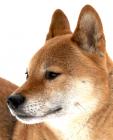
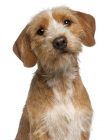
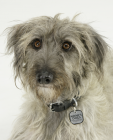

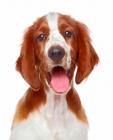
If you like Irish Terriers, you may like other breeds with similar characteristics »
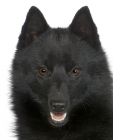
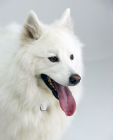
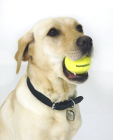
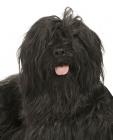

If you like Irish Terriers, you may be interested in these other terrier dogs »




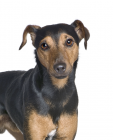
Advice on choosing your breed »
Find an animal shelter or rescue home where a Irish Terrier is waiting for a new home »
The following grid gives a fast track review which covers all breeds. You can apply it to help you decide if an Irish Terrier is suitable for you, the environment where you live, your personality and your lifestyle. On the grid, 1 = strongly disagree, and 5 = strongly agree. For example, if you are looking for a dog that is suitable for a city apartment, look down the list under ‘environment’ and you will see that Irish Terriers are perfect for urban living, scoring 5. If you are looking for a dog that would make a good watch dog, look under ‘role and suitability’ and you’ll see an Irish Terrier would be an excellent choice, also scoring 5. You might like to save or print off this section and keep it for reference while you check some other breeds before making your choice.
Be the first to rate this breed »
|
*PLEASE NOTE: All our breed profiles are general, and all dogs are individuals. Always talk to the breeders and meet the owners you are buying from. Try to meet the dog and its parents if it is a puppy in their home environment.









